Abstract
Introduction: Female infertility is often a culmination of various health issues. It can be prominently attributed to endometriosis, fibroids, cysts, hypothyroidism, etc. Cases of infertility have high chances of having hypothyroidism. Thyroid plays an important role in overall fertility of a woman. While it is pertinent to tackle the causes leading to infertility, it is of primary importance to detect the possibility of hypothyroidism in the first place. Classical homeopathy is well-placed to take care of multiple causes due its nature of holistic treatment.
Methods: A 34-year-old female patient was treated with homeopathy for primary infertility, and hypothyroidism, along with fibroid, endometriosis and ovarian cysts. The overall treatment commenced in February 2018 and culminated in November 2019 at our homeopathic clinic.
The treatment method followed principles of classical homeopathy in order to employ constitutional remedies. A follow-up cycle of two weeks (with exception of four-weeks cycle, on need basis) was employed to assess the progress and recalibrate potencies and dosage.
Results: Initial three months of treatment resulted in positive swift recovery from hypothyroidism. This in turn, paved way for treatment of infertility. Further, classical homeopathy treatment of infertility and fibroids, endometriosis and cysts showed beneficial results over a cumulative duration of seventeen months.
It is worth noting that during this period, the patient had stopped homeopathic treatment for close to nine months for undergoing In vitro fertilization (IVF) procedure. The patient, however, resumed homeopathic treatment after having witnessed no desirable results from IVF procedure.
Conclusion: In cases of infertility with multitude of etiological factors, it is pertinent to manage TSH level as the foremost step. Constitutional approach of classical homeopathy can be beneficial in delivering a holistic relief in cases of infertility due to multitude of causal factors.
Keywords: female infertility, hypothyroidism, fibroids, endometriosis, cysts, classical homeopathy, case report.
Suggested Short Title: A case report on female infertility with hypothyroidism, endometriosis, fibroids, and cysts.
Introduction
Infertility is inability to achieve clinical pregnancy after at least twelve months of regular unprotected sexual intercourse [1]. Some of the common causes attributed to infertility in women are fibroids, endometriosis, pelvic inflammatory disease (PID), cysts, blocked fallopian tubes, physical problems with the uterus, polycystic ovary syndrome (PCOS), autoimmune disorders, etc.
Hypothyroidism (commonly referred to as underactive thyroid), is a disorder when the thyroid gland does not produce an ample amount of thyroid hormone. Prevalence of hypothyroidism in women of reproductive age is estimated to be 2-4% [2]. Since thyroid plays an important part in regulating menstrual cycle and ovulation, hypothyroidism gives rise to various gynecological health issues. Untreated hypothyroidism often leads to infertility in women.
The Patient
The patient is a 34-year-old female. She opted for homeopathic treatment from our clinic in Gurugram, India. Since the patient belonged to another city, Dehradun in India, she opted for online consultation.
The patient initially approached for treatment of primary infertility. During case taking and assessment of reports, it occurred that the patient had additional issues such as hypothyroidism along with fibroids, endometriosis and cysts. The treatment procedure commenced in February 2018.
Hypothyroidism: The patient is a known case of hypothyroidism since 2014. Although not regularly, she had been taking Thyronorm 25 mcg intermittently. Latest available TSH (Thyroid Stimulating Hormone) report when she approached our clinic revealed TSH=105 µIU/ml as shown in Image 1. Since mid-2017, patient stopped taking Thyronorm for hypothyroidism.
Image 1: Initial TSH Test
Fibroid: The patient is also detected with left wall sub-serosal fibroid (17 mm). Refer to the USG shown in Image 2.
Image 2: Initial USG
Cyst: Presence of thin-walled clear avascular cyst (13 mm) detected in right ovary as shown in Image 2.
Endometriosis: The patient was diagnosed with Grade-3 endometriosis in 2015. A thin-walled endometrioma 12 mm across detected in right ovary as shown in Images 2, and 3.
Image 3: Initial Case Report
As a first step, it was important to manage the alarmingly high TSH level. This was required to make effective treatment of other health issues and subsequently the infertility. Therefore, as Stage-1, the primary focus was to bring down TSH level from 105 µIU/ml to less than 10 µIU/ml.
Although TSH=10 µIU/ml is still considered higher than the required ideal level, achieving this milestone would have enabled the patient to respond to treatment procedure for other health issues. The efforts to bring the TSH down to TSH<6 µIU/ml would have continued simultaneously. Once TSH=10 µIU/ml is achieved, Stage-2 of treatment procedure commenced. Stage-2 worked simultaneously on bringing the TSH level further down and treatment of other symptoms of infertility.
STAGE – 1: Managing Hypothyroidism
Presenting Complaints
- Failure to conceive
- Constipation with ineffectual urging: The patient had been troubled with constipation regularly for last 5-6 years.
- Character Stool: Very hard, small balls, difficult to pass. Severe pain while defecating
- Modalities
- Aggravation: Eating refined flour, junk food, during menses.
- Amelioration: By drinking cold milk 3+. If she misses milk then even with laxatives, she used to experience painful defecation. Patient was taking laxative for 6 years.
- Concomitants
- Acne: Observed acne on the face. Sometimes painful. All over the face. More dominant acne on right side of the face.
- Aphthae on tongue: Burning and painful ulcers on the tongue. Yellow in appearance. Offensive odor from mouth.
- Hypomenorrhea: Prevailing since menarche.
- Character
- Regular cycle of 28 to 30 days. Scanty flow 3++. Bright red in colour. No offensive smell.
- Duration
- Five days. Initial two days scanty flow. Followed with spotting thereafter. No abdominal pain or cramps before or during menstrual periods.
- Concomitants
- Extreme weakness and exhaustion during menses 3+.
- At times tenderness in both breasts 6-7 days prior to menses. However, not necessarily true with every cycle.
- Restlessness alleviates by moving or walking.
- Increased appetite. Eating constantly. However, no weight gain.
- Character
Physical Generals
- Thermal: Towards chilly but sometimes she feels very hot.
- Thirst: Thirsty. Likes drinking cold water. However, due to constipation she drinks normal or lukewarm water.
- Dry mouth: Feels dryness in mouth
- Tongue: Cracked tongue.
- Desire: Piquant
- Aversion: Nil
- Intolerance: Intolerance towards refined flour. A small amount causes constipation.
- Built: Slightly underweight (BMI = 16.1).
- Sleep: Sleepiness all the time. Not refreshing.
- Position: Variable
- Dreams: Does not remember.
- Sweating: She used to feel like sweating but never experiences palpable sweat.
- Urine: NAD
- Skin: Pale, yellowish complexion. Acne scars on face.
- Menstrual Cycle: Menarche at age 15.
- Abnormal discharge / Leucorrhea: No
- Obstetric history: Nil
Family History
- Father: Suffering from depression.
- Mother: Has diabetes and rheumatoid arthritis.
- Brother: Healthy
Past History
The patient suffered with instance of jaundice at age 13. Severe acne vulgaris right from teenage. In 2007, a brownish patch appeared on her right breast. It was treated successfully by dermatological intervention. In 2013, she had suffered severe episodes of Urinary Tract Infection (UTI). In 2015, the patient underwent surgery for Laparoadhesiolysis and removal of left ovarian endometrioma (4x5cm) with partial oophorectomy (refer to Image 3). The patient had undergone three separate attempts of Intrauterine Insemination (IUI) in 2015, 2017, and 2019 respectively (Image 3). Additionally, she had also undergone one attempt of In vitro fertilization (IVF) in 2019.
Marital History
Married at 28 years of age in 2012. She was 34 when she approached our clinic for treatment of her infertility issues. Husband is an introvert person by nature.
Mental Generals
- The patient quoted, “I feel weakness, dizziness, and fatigued with physical work. At the same time, physical work; makes me feel relieved mentally.”
- Her mental activity increased all the time. Too much thoughts in her mind.
- She used to feel anxiety when hungry.
- Thinks of making good food and eat all the time.
- Company: Does not like.
- Very fond of travelling.
Repertorisation
Repertorisation was done with Radar Opus (refer Image 4). Repertory used was Robin Murphy.
Image 4: Repertorisation
Miasm: SYCOSIS
The following symptoms were considered for repertorisation.
- Mind – ANXIETY, general – hungry, when
- Glands – thyroid, gland, general – hypothyroid
- Female – CYSTS, genitalia – ovarian
- Female – ENDOMETRIOSIS, general – chronic
- Female – INFERTILITY
- Female – FIBROIDS, genitalia – uterus
- Female – MENSES, general – weakness, during:
- Rectum – CONSTIPATION, general – milk, amel.
- Food – APPETITE, general – constant, appetite
- Perspiration – SENSATION, as if about to perspire, but no moisture appears
- Generals – EXERTION, Physical- amel, – mental
- Constitutions -LEAN, thin constitutions
The repertorisation directed towards the remedy Iodium[3,4,5,6,7]. It was prescribed to the patient in potency 200, single dose.
Follow-up and Outcome
A follow-up cycle of two-weeks was set for close assessment. The first couple of weeks witnessed marked reduction in TSH level as shown in Table 1. After further two-weeks the patient started feeling better at emotional and mental levels.
The symptoms started showing gradual improvement. On 18 April 2018, when there was negligible change in the overall symptoms compared to the previous follow-up; Iodium was repeated in potency 200.
The patient started reporting improvement in physical symptoms. At emotional front she started feeling much relieved. The TSH level continued to improve. The journey of improvement of TSH level is elaborated in Table 1. By the end of Jun-2018 the TSH was close to acceptable level (TSH=6.35 µIU/ml). It was good enough to commence next phase of treatment, while still working on improving the TSH level further.
Since hypothyroidism was under control, at this juncture, it was appropriate to now focus on managing causes and symptoms pertaining to infertility, as per Aphorism 3 in Organon of Medicine[9].
The patient, however, was stressful. She was under pressure from her family to conceive. The patient chose to go for In vitro fertilization (IVF). On 16 August 2018, the patient stopped taking homeopathy, as advised by her IVF consultant. The consultant prescribed Thyronorm 50mcg at this stage.
STAGE – 2: Resuming Homeopathic Treatment
The patient approached our clinic again in May-2019, to resume homeopathic treatment procedure. During this gap of close to nine months (Aug-2018 through May-2019), the patient had undergone one attempt of Intrauterine Insemination (IUI) treatment followed by an attempt of IVF treatment procedure.
Neither of the two, however, produced desired results. Meanwhile, the patient had undergone many changes, both on physical and mental fronts. The patient had been on a course of hormonal supplements and other medications. We, therefore, conducted a fresh case-taking session. The critical observations are given below.
Observations
Hair-fall: The patient had been observing quite severe hair-fall in the recent past. A complete bald patch was noticeable on the scalp. She had also taken treatment from a dermatologist which included injections on the scalp and oral medications.
Intrauterine insemination (IUI): As mentioned above, the patient had also gone through IUI treatment procedure in Feb-2019. This too, did not culminate in desired results.
Increased prolactin and CA-125
Emotional stress compounded: As such she was already under stress pertaining to conceiving pregnancy. The recent failed attempts of treatments put her into further emotional stress. The same percolated to married life, so much so that she had to pay several visits to a marriage counsellor.
Reasons for failed IVF: It was quoted by the IVF consultant that the poor egg quality and disordered endometrium were the primary reasons for failure of her IVF procedure.
Dejected feeling: The patient felt dejected at emotional level
Excessive weight loss: Body weight lost. BMI, which was already on the lower side dropped further. BMI went down from 16.1 to 15.5.
Constipation: The constipation was severe.
Menstrual flow: Menstrual flow was scanty earlier. However, it reduced further.
Acne: Severed just before menses.
Emotional: Became more irritable. Increased anxiety. Increased restlessness.
Endometrium severed: Disordered proliferative endometrium.
Other symptoms unchanged: All the rest of her physical and mental symptoms were largely unchanged.
Assessment and Follow-up
The patient was subjected to hormonal therapy for her IVF. The drugs, hormonal injections and other medications are categorised as ‘hot medicines’. ‘Hot medicines’ and ‘side effects due to excessive drugging’ directed towards Nux vomica[10,11,12]. The remedy was prescribed in 200 potency, single dose on 23rd May 2019. A fifteen-day follow-up cycle was scheduled for assessment and recalibration.
The same is captured in Table 2. During the next follow-up on 3rd June 2019, no considerable changes were noted, both on physical and mental fronts. The patient’s constitutional remedy Iodium was prescribed. It was prescribed in 1M potency, and we increased the frequency in diluted form on daily basis.
For endometrial repair of disordered proliferative endometrium, Janosia Asoka Q was prescribed. J Asoka works as a tonic for endometrial repair. It has stimulating effect on endometrial tissues[16]. It helps in healing the inflamed endometrium [16]. It was prescribed in mother tincture (Q) on daily basis.
The next follow-up was scheduled on 4th July 2019. Acne on the face subsided. No change in menstrual flow. Constipation subsided. Libido decreased. No change on emotional front. Continued with Iodium and J Asoka. Additionally, prescribed Folliculinum for stimulating ovaries. Folliculinum acts well for enhancing the quality of eggs [18,19,20] and for stimulating rejuvenation of over drained ovaries. It was prescribed in 6 potency.
Immediately after three days, i.e., on 7th July 2019, the patient complained of severe weakness, dizziness, and blurred vision. Ophthalmic intervention was recommended. As per the ophthalmologist, the excessive hormone consumption may have been the causative factor.
During the next follow-up cycle on 30th July 2019, the patient reported good menstrual flow. No dizziness or blurred vision. Constipation was slightly better. However, although in reduced quantities, the patient still had to take laxatives.
Hair fall was still severe. Appetite was back to normalcy. Acne had subsided in great proportions. At this stage repeated Iodium in 1M potency diluted in distilled water. During the subsequent follow-up we calibrated the dosage and the potency as per progress shown in various symptoms under observation as shown in Table 2. In Nov-2019, the patient reported missed periods. UPT conducted after a week was positive (Ultrasound Early Pregnancy as shown in Image 5).
Image 5: Ultrasound
Discussion
The patient presented with infertility issues. A detailed case taking and assessment brought out causes leading to infertility. It was a complex case of female infertility with hypothyroidism, endometriosis, fibroids and cysts. We decided to manage hypothyroidism on priority. Bringing down TSH level paved way for better efficacy of treatment of other causal factors (viz. endometriosis, fibroids, cysts, etc.).
During the treatment we encountered a gap of over nine months where the patient stopped homeopathic treatment and underwent IVF treatment procedure. Homeopathic treatment was resumed after IVF treatment procedure had failed.
A case analysis was conducted again. Constitutional remedy Iodium was maintained throughout the treatment. Other remedies were administered on the basis of symptoms. Folliculinum was administered to stimulate the rejuvenation of over-drained ovaries. Likewise, J Asoka was administered to repair and heal the disordered endometrium.
Conclusion
This case exhibits that managing hypothyroidism in a case of female infertility, if taken up on priority, paves way for effective treatment of other associated causal factors and symptoms.
Totality of symptoms were taken into consideration. Constitutional remedy continued throughout the course of the treatment. It can be concluded that with detailed case assessment, causal factors have to be dealt with in order of priority.
Hypothyroidism should be managed with high priority. Constitutional remedy should be maintained all throughout the course of the treatment while other remedies can be administered with close follow-ups as per the progress in the symptoms.
Highlights
- This case report exhibits the efficacy and benefits of principles of classical homeopathy for treatment of a complex case of female infertility with multiple causal factors such as hypothyroidism, endometriosis, fibroids, and cysts.
- The case report also presents that in cases of female infertility, the possibility of hypothyroidism should be ascertained and dealt with on top priority.
References
1 World Health Organization. Infertility definitions and terminology. Clinical definitions. Available at: .
2 Lincoln SR, Ke RW, Kutteh WH. Screening for hypothyroidism in infertile women. J Reprod. Med. 1999 May; 44(5):455-7. PMID: 10360260. Available at: https://pubmed.ncbi.nlm.nih.gov/10360260/. Accessed Feb-Mar, 2019.
3 Allen HC. Allen’s Keynotes. 10th ed. B Jain New Delhi. 2013: pp 155.
4 Scholten J. Homoeopthy and Minerals. Homoeopathic Medical Publishers Mumbai 2009: pp 211.
5 Murphy R. Lotus Materia Medica. 3rd ed. B Jain New Delhi 2014: pp 991.
6 Choudhuri NM. A study on Materia Medica. 2nd ed. B Jain New Delhi 2012: pp 509-514.
7 Vithoulkas G. Talks on Classical Homoeopathy Part II Materia Medic a. 6th impression. B Jain New Delhi 2012: pp 44.
8 Boericke W. Boericke’s New Manual of Homeopathic Materia Medica with Repertory. 33rd Impression. B Jain New Delhi 2015: pp 1109.
9 Hahnemann S, Dudgeon RE. Organon of Medicine. Aphorism No. 3. 6th ed. B Jain New Delhi 2000: pp 31.
10 Burt W. Physiological Materia Medica. Available at: Radar Opus 2.2.16. Accessed May 20, 2019.
11 Boericke W. Boericke’s New Manual of Homeopathic Materia Medica with Repertory. 33rd Impression. B Jain New Delhi 2015: pp 422.
12 Bernoville F. What We Must NOT do in Homoeopathy. 10th Impression. B Jain New Delhi 2012: pp 55.
13 Kent JT. Lectures on Homoeopathic Philosophy. 2nd ed. EHRHART & KARL Chicago, Illinois 1919: 277. Available at: https://archive.org/details/lecturesonhomoe00kentgoog/page/n3/mode/2up. Accessed Jun 3, 2019.
14 Curie PF. Practice of Homoeopathy. Chapter 4. Of The Repetition Of The Medicament. Pg 75. Available at: https://books.google.co.in/books?id=erdLAAAAMAAJ&pg=PA75&output=html_text&source=gbs_toc_r&cad=4 . Accessed Jun 3, 2019.
15 Murphy R. Robin Murphy’s Commentary on Organon of Medicine. 6th ed. B Jain New Delhi 2004, 2005: pp 203
16 Borokar AA, Pansare TA. Plant Profile, Phytochemistry and Pharmacology of Ashoka (Saraca Asoca (Roxb.), De. Wilde) – A Comprehensive Review. International Journal of Ayurvedic and Herbal Medicine 7:2(2017) 2524–254. Available at: http://www.interscience.org.uk/. Accessed May 24, 2019
17 Singh S, Kumar R, Karwasra R, Kalra P, Rani S, Nayak D, Gupta Y K. Evaluation of safety profile of homoeopathic mother tinctures. Indian J Res Homoeopathy [serial online] 2014; 8:81-6. Available at: https://www.ijrh.org/text.asp?2014/8/2/81/135640. Accessed May 24, 2019
18 Master FJ. My experiences with Diethylstilbestrol (DES) and Folliculinum. Homeopathy Papers. Available at: https://hpathy.com/homeopathy-papers/experiences-diethylstilbestrol-des-folliculinum/. Accessed Jun 1, 2019
19 Assilem M. Materia Medica Folliculinum. Available at: https://hpathy.com/materia-medica/folliculinum-mist-or-miasm/. Accessed Jun 1, 2019
20 Banerjea S. Classical Homoeopathy for an Impatient World Rapid Classical Prescribing. 1st ed. 2nd impression. B Jain New Delhi 2012: pp 353.
Tables
Table 1: Follow-up and outcome for Stage-1 (Hypothyroidism Treatment)
| Date | Description | Prescription | Remarks |
| 26-Feb-18 | Treatment commencement.
TSH = 105 µIU/ml (Image 1) |
Iodium 200, SD stat | Remedy based on totality of symptoms. |
| 15-Mar-18 | TSH level reduced rapidly.
On 5Mar2018 On 11Mar2018 |
SL 30, SD stat | TSH level reduced favorably. |
| 02-Apr-18 | Constipation improved slightly.
TSH level reduced further. TSH = 15.86 µIU/ml |
SL 30, SD stat | TSH level reduced favorably. |
| 18-Apr-18 | Constipation severed.
No other significant changes in physical and mental generals. |
Iodium 200, SD stat | Duration of action 30-40 days[8].
|
| 04-May-18 | TSH level decreased further. Improvement in acne and constipation. Weakness and tiredness reduced.TSH = 9.29 µIU/ml |
SL 30, SD stat | |
| 20-May-18 | Improvement in acne and constipation continued.
Reduced anxiety. |
SL 30, SD stat | |
| 05-Jun-18 | TSH reduced close to normalcy. Rest same as last follow-up.TSH = 6.35 µIU/ml (Image 7) |
SL 30, SD stat | Advised transvaginal scan. |
| 04-Jul-18 | Constipation better.
TSH levels are near normal. Acne better. |
SL200. | As per USG scan conducted on 19Jun2018 (as shown in Image 2):
a. Left-wall sub serosal fibroid (17mm). b. Thin-walled clear avascular cyst (13mm) in right ovary. c. Thin-walled endometrioma (12mm) in right ovary. |
| 26-Jul-18 | LMP 18Jul2018.
Menstrual flow scanty. Constipation severed. Acne severed. |
Iodium 200 single dose. |
Image 6: Improvement in T3, T4
Image 7: Improvement in TSH
Table 2: Follow-up and outcome for Stage-2 (Infertility Treatment)
| Date | Prescription | Comments | Remarks |
| 23-May-19 | Fresh case assessment LMP 15May2019 Scanty flow lasting two days Appearance of severe acne just before the menses Severe constipation Taking laxatives Irritable in nature Increased anxiety level Increased restlessness Increased forgetfulness. |
Nux-vomica, 200 SD. | Patient had been consuming artificial hormones (oral and injectables) during her hormonal therapy prior to recommencing homeopathic treatment. |
| 03-Jun-19 | No significant change in physical and mental generals | a. Iodium 1M, 5 drops diluted in 10 ml of distilled water. 6 drops of solution once in morning.
b. Janosia Asoka Q, 10 drops thrice a day. |
Iodium is patient’s constitutional remedy. Increased both the potency and the repetitions[13,14,15]. Janosia Asoka to heal the disordered and inflamed endometrium[17]. |
| 04-Jul-19 | LMP 16Jun2019 Menstrual flow unchanged Severity of acne reduced considerably Constipation better. She reduced the doses of purgatives. Libido very much decreased No changes at mental level |
a. Iodium 1M, 5 drops diluted in 10 ml of distilled water. 6 drops once in morning.
b. Janosia Asoka Q, 10 drops thrice a day. c. Folliculinum 6x |
Folliculinum 6x to stimulate rejuvenation of over-drained ovaries. |
| 07-Jul-19 | Patient updated about complaints of severe weakness, dizziness with blurred vision. Ophthalmic intervention recommended. BP: 115/75 Hb 11.8 |
||
| 30-Jul-19 | LMP 17Jul2019 Improvement in menstrual flow. Dizziness and blurred vision subsided. Constipation subsided considerable. Consumption of laxatives reduced from daily basis to twice a week. Hair fall was still prevailing Appetite back to normal Continued improvement in acne. |
a. Iodium 1M liquid diluted in distilled water.
b. Janosia Asoka Q liquid diluted in distilled water. c. Folliculinum 6x |
Repeating the same set of medicines as gradual improvement was observed |
| 30-Aug-19 | LMP 17Aug2019. Menstrual flow improved. Constipation and acne much better. Hair fall still severe. |
a. Iodium 1M liquid diluted in distilled water.
b. Janosia Asoka Q, liquid diluted in distilled water. c. Folliculinum 6x |
Continued same line of treatment as there was considerable recovery. |
| 30-Sep-19 | LMP 17Sep2019. Flow was good. Constipation and acne better. Hair-fall more intense. Mentally patient was very disturbed because of her hair fall. Patient started applying lotions containing steroid. externally on her scalp without my knowledge. |
a. Iodium 1M liquid diluted in distilled water.
b. Janosia Asoka Q, liquid diluted in distilled water. c. Folliculinum 6x |
Continued same line of treatment as there was considerable recovery.
Advised stopping the external application to scalp. |
| 16-Oct-19 | Constipation and acne more intense. Hair-fall increased. | Iodium 10M single dose. | Discontinued Janosia Asoka and Folliculinum 6x as it’s been over four months. |
| 01-Nov-19 | LMP 18Oct2019 Flow comparatively increased. severe pain before menses. Increased breast tenderness. Acne and constipation are better. Hair-fall no changes. Mentally feeling relaxed. |
SL 1M | |
| 20-Nov-19 | Patient reported missed periods. Told her to wait and watch for a week. | SL 1M | |
| 25-Nov-19 | UPT positive. |

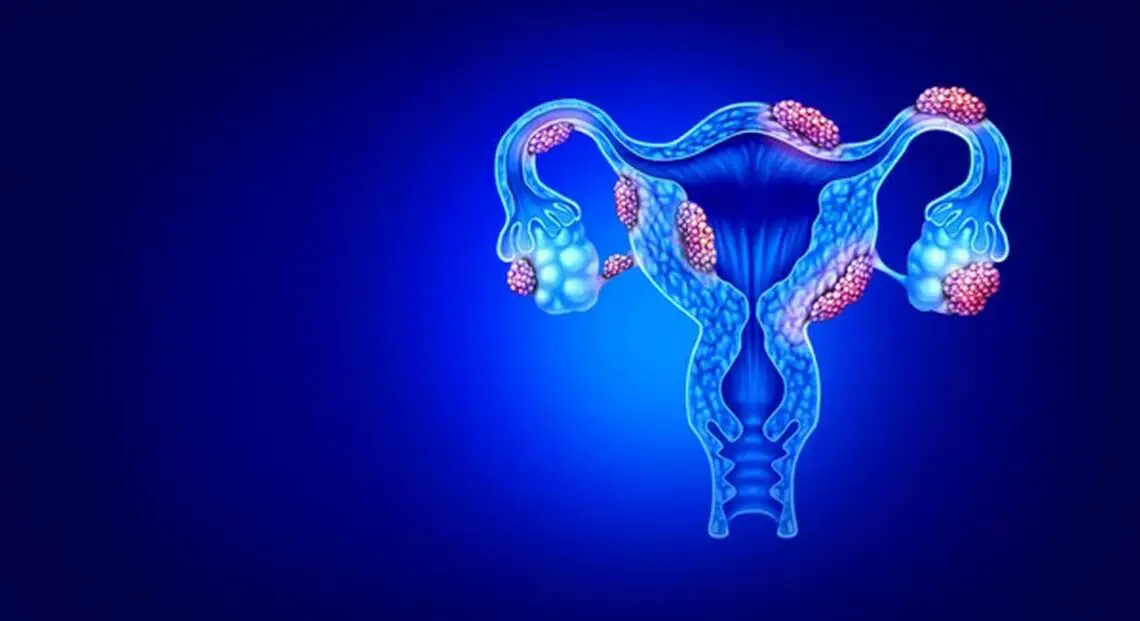
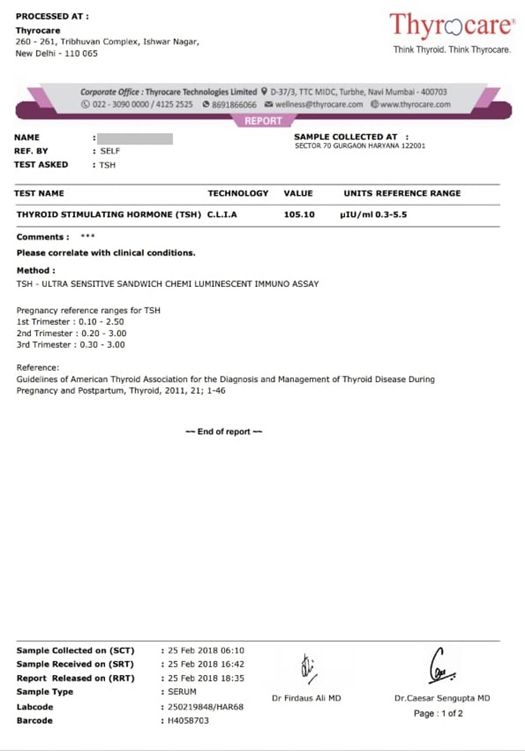

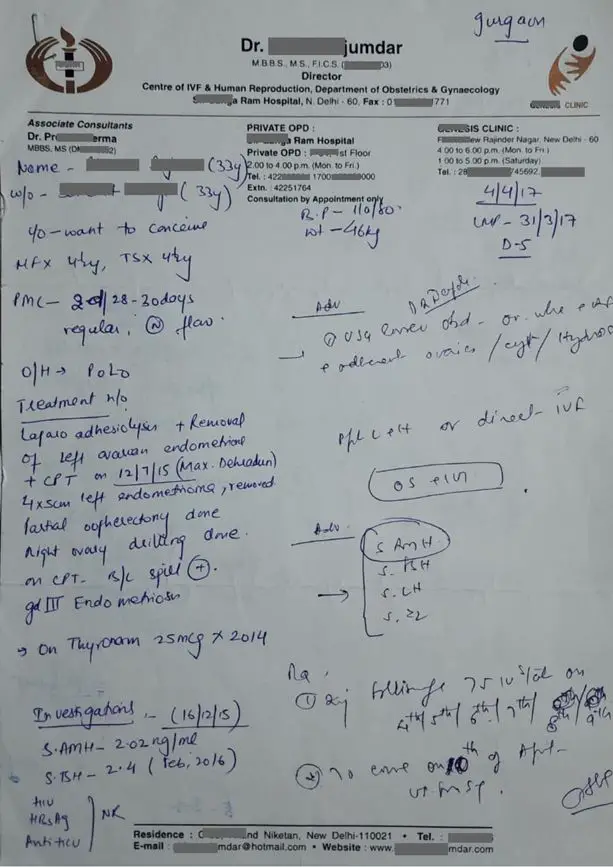
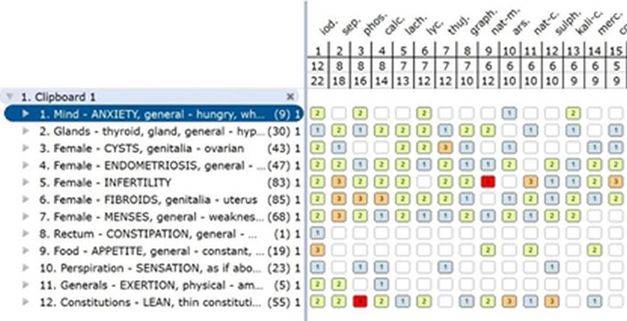
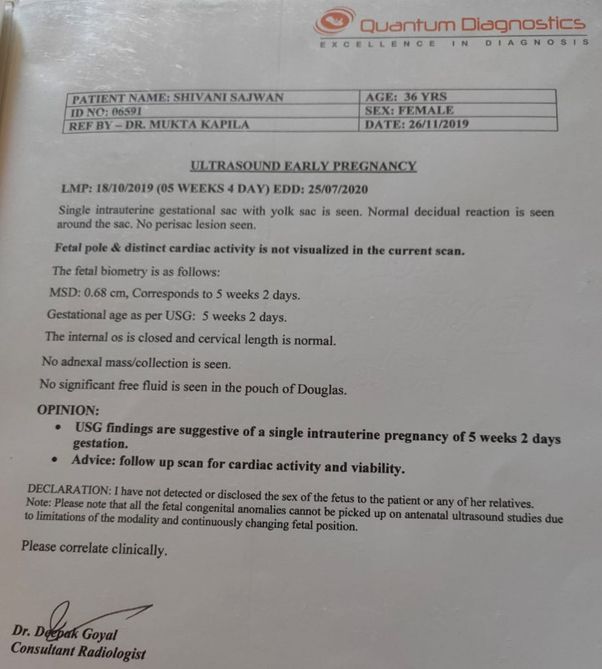



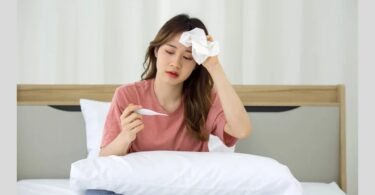
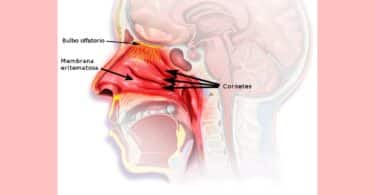

Feeling positive with this mam…You truly are an inspiration!
Medicines can cure, but a good doctor’s inspirational words can give the strength to fight from within.
Your great explanation of my illness and giving me hope that I can recover gave me the strength to face this life’s challenge. Knowing that you are my doctor, I feel safe. My trust and confidence are always with you.. thank you 🙏